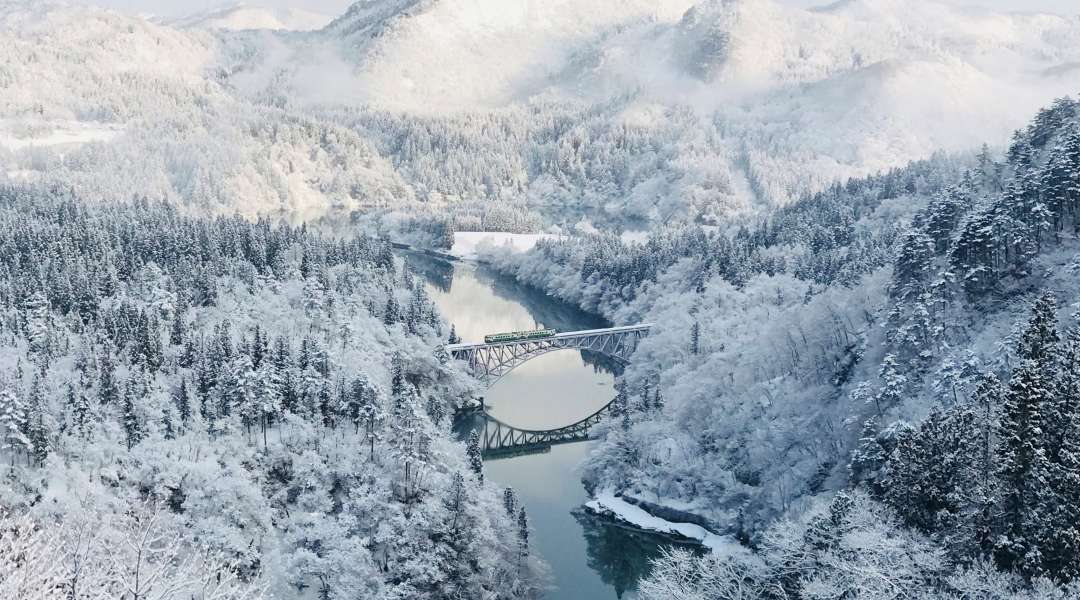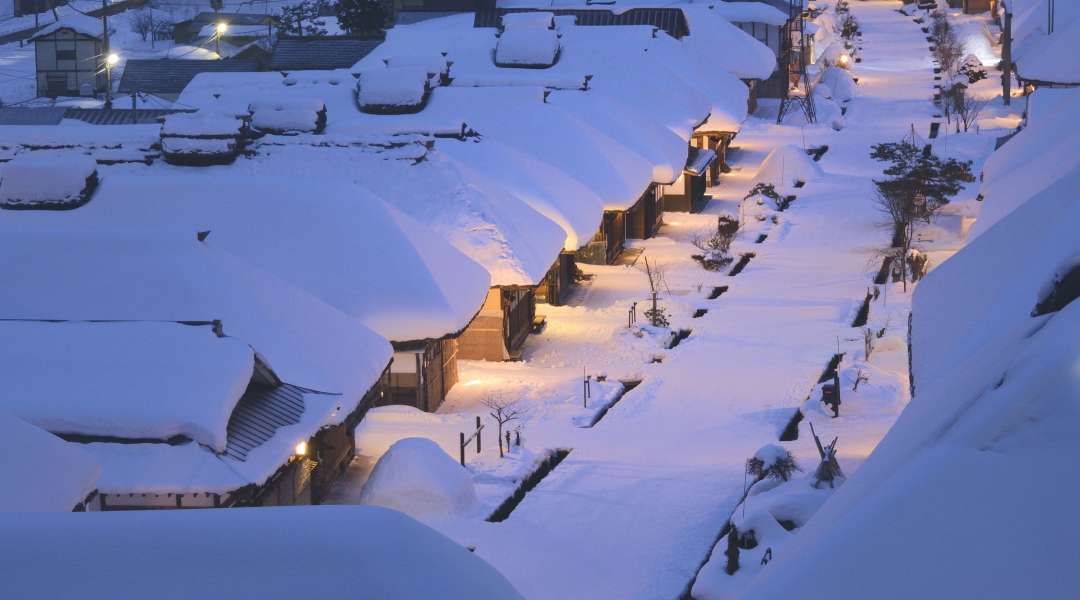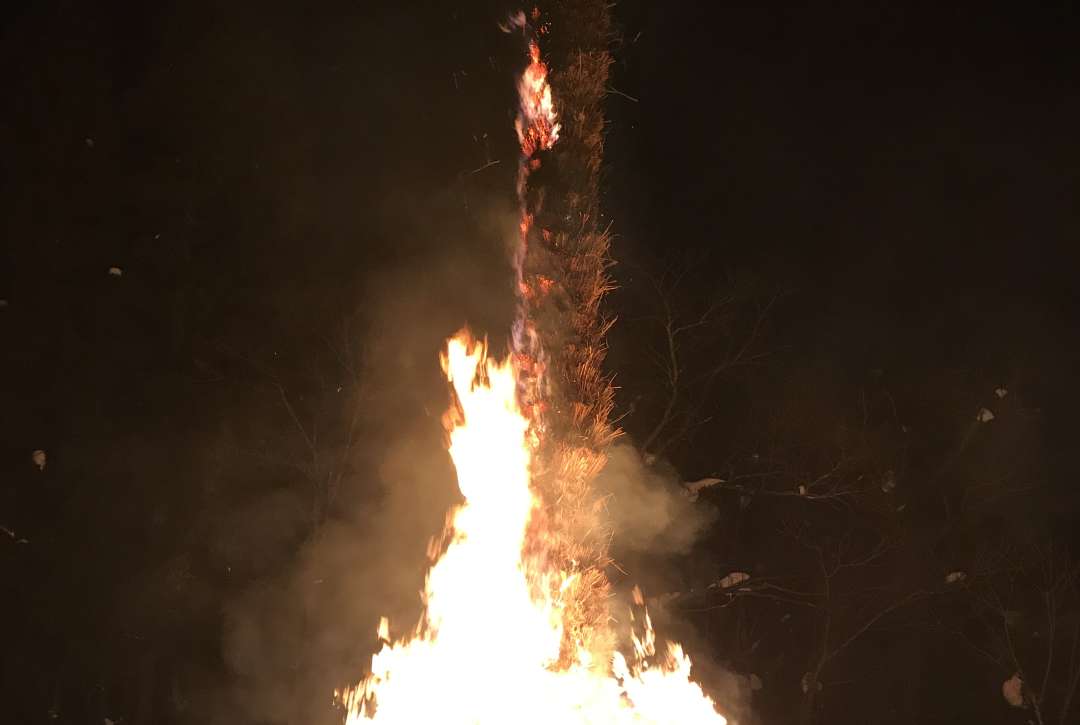
As we are forced to spend more and more time indoors looking at pretty pictures of places we want to visit, there’s a growing sense that we just want to escape into nature. With it looking more and more likely that winter 2020 and 2021 might be our next best chance, we think we might have found a winning recommendation.
Oku-Aizu or ‘deep Aizu’ is the scenic mountainous heart of the old-timey Aizu region just north of Tokyo, accessible by sightseeing train from the samurai city of Aizu-Wakamatsu along the twists and turns of the Tadami river. Home to traditional crafts, quaint villages, impressive railway bridges and more fresh sake than you can shake a stick at, the region is a veritable hidden gem that is slowly opening up to international visitors.
This includes exciting new accommodation options and we caught up with a local lodge-owner to find out what life is like in this in this beautiful and enigmatic part of rural Japan.

Hi Imai-san! Lovely to meet you - could you start by telling us a bit about yourself?
Hello! My name is Takako Imai and I’m the Representative Director to a company called Takacommons, looking after the management of a collection of self-catering villas, the Ittogashi Village, in the quaint towns of Mishima and Hayato, Oku-Aizu. We have a couple of properties - one called the Kawaberi-to which is built on an elevation overlooking the scenic Tadami River as it passes through Mugenkyo gorge, and another two called the Honson-to which are located in a small settlement on the top of a mountain. Inside, you can really feel the warmth of the Japanese wood used to build them and we’ve furnished them out in a simple, minimalist way with Muji products and small ornaments.
They're all vacation rental type accommodations for groups/families to rent out a day at a time.
The Kawaberi-to has an interesting history in that it was formerly used as a temporary residence for victims of the 2011 Earthquake and Tsunami in Iwaki city for 8 years, before being moved here and repurposed into the cottage you see today. It’s very popular, being a 2 minute walk from the 1200-year-old secluded hot spring ‘Hayato Onsen Tsuru no yu’ and the perfect spot to watch the famous Mugenkyo mists roll in over the Tadami river from your room in summer.
The Honson-to is in a quiet mountain village in amongst lots of traditional kominka farmhouses so is generally used by people who want to feel what it’s like to stay in a rural Japanese village, be they couples or solo travellers doing remote working. It’s fitted with a wood burning stove and a bathtub made from locally sourced Empress tree wood.

You’ve been working in the Aizu region for a while now but what’s your connection to the area? Was there a particular reason you started working in welcoming tourists to Aizu and Oku-Aizu specifically?
Previously I had gained indefinite residency in the US and had been living there for 26 years, and it was just when I was considering moving home that I saw that a position had come up to work as a part of a tourism campaign helping rebuild Fukushima prefecture and the Aizu region, the area I’m originally from which, as we all know, was also affected by the 2011 earthquake and tsunami.
Right after that, I came back to visit and was so absolutely blown away again by the beauty of the snowy winter landscapes of Oku-Aizu that I applied for the job and moved back into Mishima village in May of 2017.
Whilst working on projects to revitalise the area through tourism, I realised that Oku-Aizu lacked the kinds of private rentals that would happily accommodate the overseas visitors we were looking to welcome, and decided, well why not set them up myself! After two years of hard work, I gave up my day job, set up my own company and opened up the Ittogashi Village in August of 2019.
What is day to day life like in Oku-Aizu at the moment?
The ageing population rate is the highest in the prefecture, here, so life is imaginably quiet, with quite a few empty houses and increasing numbers of people migrating away to more urban areas. With all of that as a backdrop, the whole area took the coronavirus advisories very seriously as it could have had a real impact on the lives of residents, should the virus have found a way in. This meant that I also did my part and refrained from accepting guests into the lodges for about a month and half up until the end of May.
Thankfully there has not even been one case of infection in Oku-Aizu or the Aizu region as a whole.
In the bigger urban areas, I heard people were being asked not to leave the house, but because we’re all mountain communities here, despite the fears, there was actually not so much stress as you can get away with hardly seeing anyone, even if you go out onto the walking trails or into the woods for a stroll.
I've been filled with a great appreciation for life in rural Japan!
What are the seasons like in the Aizu region? We’ve heard winters are stunning to visit but can be long and tough for residents day in day out.

In recent years there has actually been less snowfall than usual, but this area is what’s known in Japan as ‘snow country’, and dealing with mounds of snow is a big task. In Japanese, we usually say ‘yuki-kaki’, which literally means ‘shovelling snow’, but here people say ‘yuki-katashi’ which literally means ‘organising snow’ - there can sometimes be so much snow that you don’t just clear it, you have to strategically tidy and organise it! Snow that has water in it is unbelievably heavy, and at its worst, it can mean hours of manual labour, organising the snow, everyday.
There aren’t a lot of young people around and most people are older and live alone, so everyone has to roll up their sleeves and get involved with the hands on stuff. It’s not unusual for a 90 year old to be out in the middle of winter, sorting through a mountain of snow.
In the UK, we’re currently still experiencing a whole different kind of involuntary isolation. We know that the Aizu region has a real wealth of crafts and customs that are alive and well but what practices have evolved to survive the long, isolated winters in Oku-Aizu?
For food, people here use all sorts of means to preserve all the mountain vegetables harvested in spring and all the field crops harvested in summer, to then eat them in winter. It’s created a unique cuisine around naturally preserved ingredients, but is also quite high in sodium, which people say explains high blood pressure amongst rural communities!
When it comes to houses, people make sure to deck each house out in ‘yuki-gakoi’, handmade bamboo grids that are placed on rooves before it starts snowing, in order to stop the weight of the snow from causing structural damage.
Because the snow is deep when it falls, too, you either have to invest in good quality wellington/snow boots or some people use ‘kanjiki’, traditional snow shoes made from bamboo and rope that you wear on the bottom of your shoes.
Of course, you also have to get your tools ready for organising all that snow!
A lot of the towns are remote, and though many are connected to the Tadami line sightseeing train, many also aren’t. What do people do to pass the time? We’ve heard that traditional crafts are so alive in the Aizu region specifically because it’s hard to do or make anything else during winter.
In Mishima village, every house is fitted with a wireless video phone, in case there’s an earthquake etc, and these are provided for free. Older people who can’t venture outside as much use the downtime in winter to work on traditional crafts like baskets and bags woven out of branches and twine taken from mountain plants, which they may eventually sell for money. One of the things they like to do is use the video phones to show off what they’ve been making to their friends!

There are lots of festivals celebrated during winter in Aizu, but what sort of meaning and importance do you think these have?
The most important winter festival here is maybe the ‘Sainokami’ which each town hosts on the 15th January, just after New Year.
We make big ‘sainokami’ bonfires out of straw and yew branches on top of a snowy open field, and burn them as a traditional custom to wish for bountiful harvest and good health. You get all sorts of shapes and sizes of ‘sainokami’ depending on the town, and people will also burn spiritual objects like o-mamori (protection charms from temples and shrines), kadomatsu (bamboo displays decorated at New Year), and shimenawa (twisted hemp ropes often seen hanging at Shinto shrines).
The bigger and more impressive the flame, the better - it’s said if you’re touched by this flame, you’ll be protected from sickness. Also, people grill mochi or dried squid on top of this flame and take it home to divide amongst the family. The belief is that in doing so you protect your family from illness and tragedy for the rest of the year.
At the moment, the whole world is dealing with the COVID-19 pandemic but what part of the Aizu and Oku-Aizu region brings you most hope and do you most wish for visitors to enjoy in the future?

It's the rolling Japanese natural landscapes that shift from beauty to beauty with the coming and going of the seasons. It’s Oku-Aizu and the eternal feeling of ease and of having found home, whenever it is that you come.
I really believe that with all that’s happened with the Coronavirus, people living in big cities will once again come to appreciate what’s so good about life in the countryside, and will come specifically seeking that same sense of ease and of home.
Thank you for your time, Imai-san!
To find out more about how to sample life in Oku-Aizu, visit their website here.
Or have a drool over the Ittogashi Village and plan your stay here.
To stay up to date with all the latest happenings in Japan follow us on Facebook or Twitter.


























































